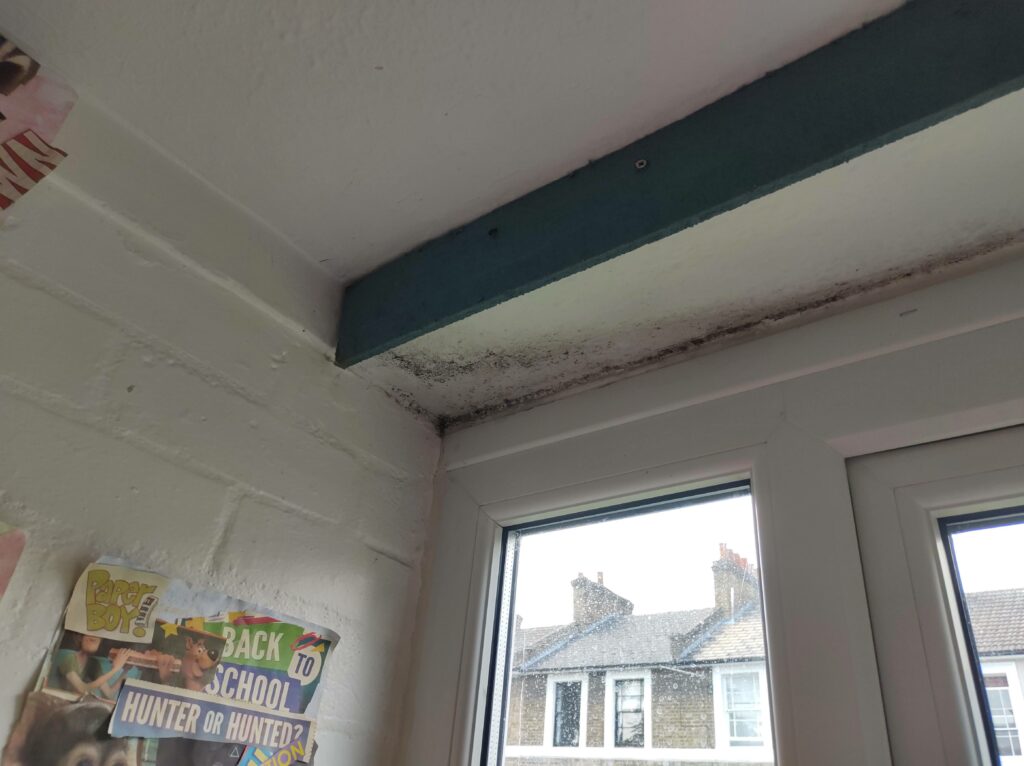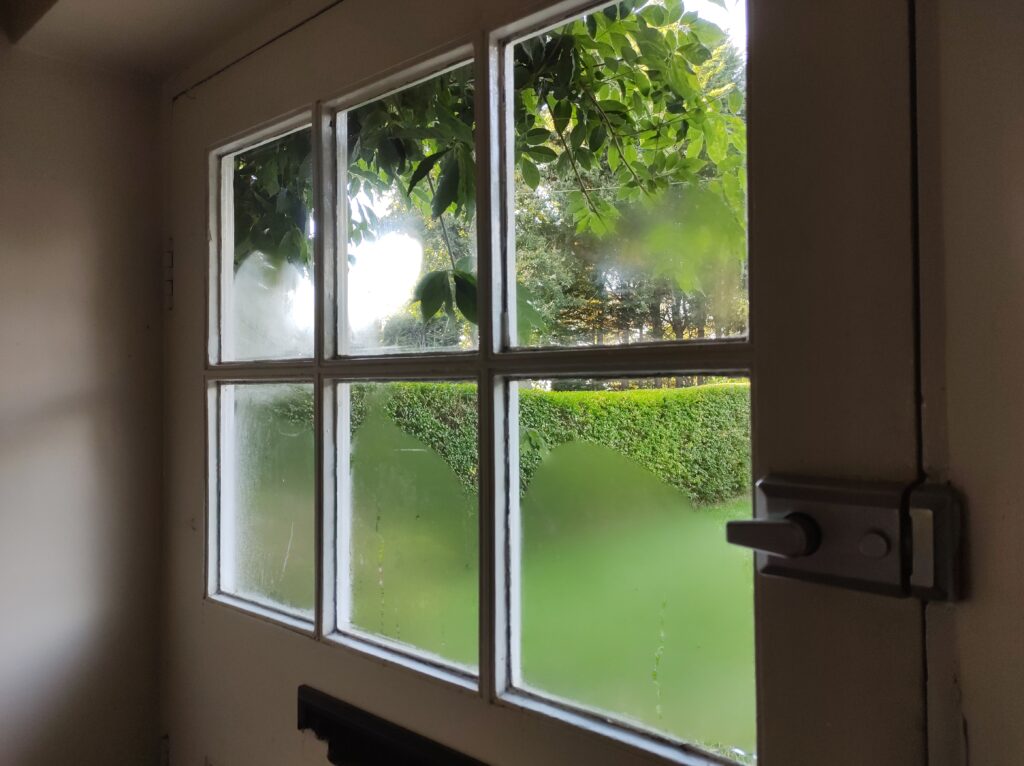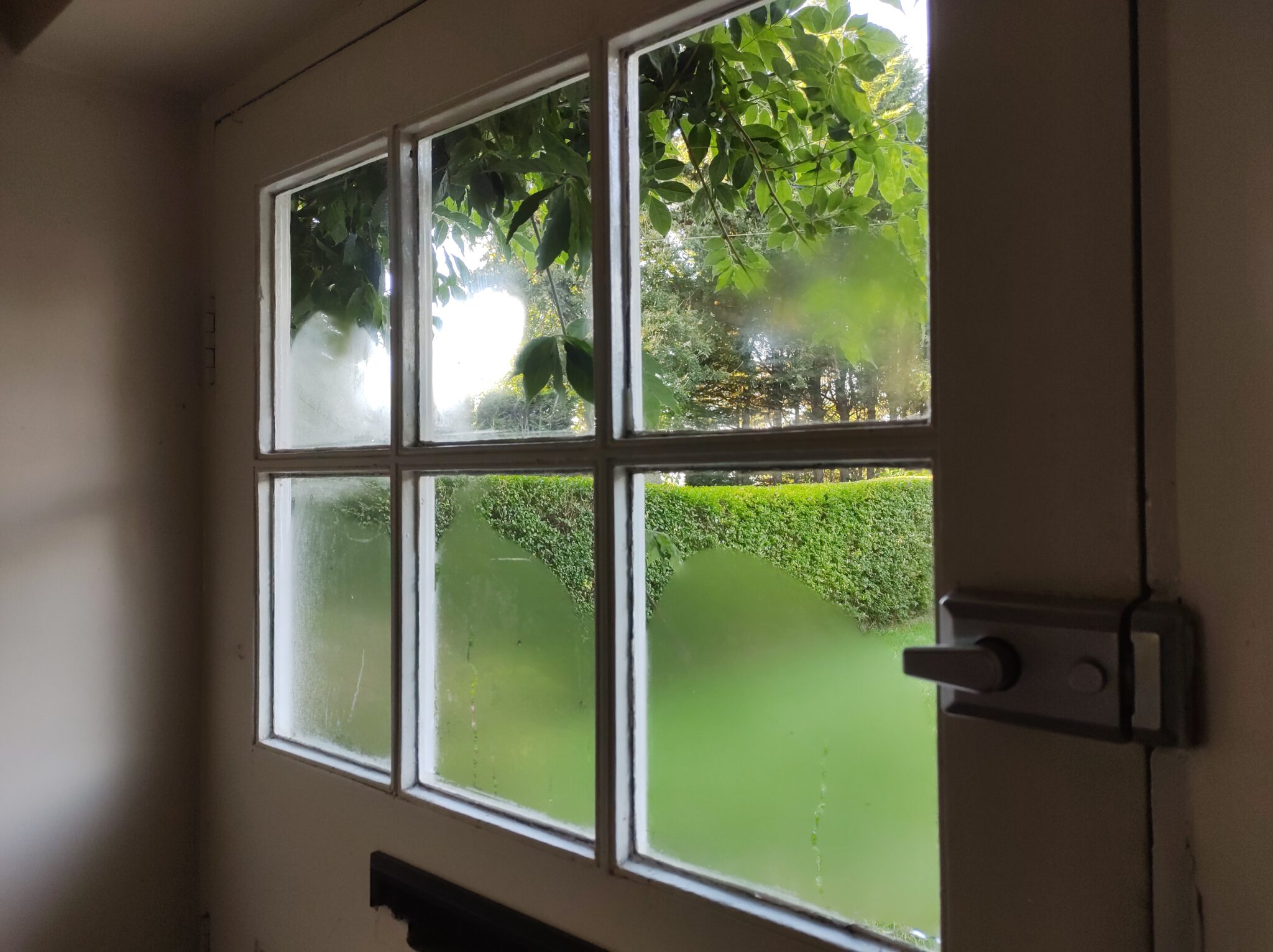If you’ve ever seen black mould in your home, you’re not alone. The problem with black mould is that unless it’s dealt with correctly (as I’ll explain below), it’s hazardous to health, not nice to look at – and will keep coming back.
Mould is formed when a surface provides the right conditions for it to grow. Perfect conditions for mould are a food source, water and air. The food source can be pretty much anything (eg, wood, paint or fabric) – all except very acidic materials such as lime plaster, which is antibacterial.

Moisture is in the air all around us as water vapour. When a surface or material cools to the point that it reaches its dewpoint temperature, the water vapour in the air will slow down to such an extent that it will form on the cold material as condensation. Water vapour will sit on a cold brick wall, and black mould spots will be the result.
Typically, with average indoor humidity the dewpoint temperature is around 12 or 13 Degrees Celcius. The dewpoint temperature is directly related to the humidity in the air: high humidity and the dewpoint temperature will occur even when the surface is warmer than 12 Degrees Celcius. If it’s drier air, the dewpoint temperature will need to be colder than 12 Degrees Celcius.
This is why you still get condensation in a hot sauna, even though the surfaces are quite warm. Cans of coke and single-glazed windows on cold days all develop condensation easily because they’re way colder than 12 Degrees Celcius.
Why do we get mould in our homes?
A winter’s day creates the perfect environment for mould to form in a home. The problems are:
- Lots of water vapour (humidity) in the air: from cooking, cleaning, breathing and drying clothes indoors. A family of four will produce 12 litres of water vapour per day in the average home.
- Low ventilation: because windows, doors and trickle vents are firmly closed to keep the cold air out, the water vapour stays inside
- Cold surfaces: at any points where the building fabric is uninsulated, draughty or a thermal bridge, the surface temperature will be cold
- Cold indoor air temperature: warm air holds water vapour more easily than cold air, so in homes that struggle to stay warm, the water vapour will find it easier to condense on surfaces.
The common areas where mould growth will occur are:
- solid brick walls, because they’re wholly uninsulated and often cold
- behind cupboards, sofas and the backs of wardrobes, because ventilation is particularly poor here
- on timber and uPVC window frames, particularly single-glazed, because glass offers almost no insulation, and this causes the frames to be cold too
- in bathrooms, because this environment tends to have the highest peaks in humidity
- around trickle vents and extractor fans, because these have ice-cold air blowing in them, so they cool down everything around them
- around any leaks or draughts in the building fabric, eg, locks or the thresholds of doors
- and on rafter or floor joists, particularly when ventilation is blocked or inhibited in lofts or suspended timber floors

What won’t prevent or get rid of mould growth
Using acidic cleaning sprays, scrubbing away the mould or mopping away the condensation will not stop the formation of mould.
Mould removal companies may charge a pretty penny to scrub it clear, but it will always come back – unless the conditions that form it are eradicated.
The solution requires two things: better ventilation and better insulation.
How is mould stopped permanently?
The only way to stop mould forming permanently is by improving the ventilation and/or making the surface temperatures warm enough to prevent the dewpoint temperature occurring.
That means:
- Insulating walls internally or externally to allow their internal surfaces to stay warm
- Blocking up draughts or areas where cold air can get in (eg, around window or door seals)
- Moving bulky furniture and/or putting in ventilation grilles to cupboards, wardrobes and areas susceptible to mould growth
- Replacing or improving windows and doors to more thermally efficient versions, to raise the internal surface temperatures. The internal surface temperature of a triple-glazed window won’t drop below 17 Degrees Celcius in a warm home, so water vapour will never condense upon it.
- Removing or mitigating thermal bridges – more so important in new build residential projects, where a structural steel beam that penetrates the insulation of the building could create cold spots within the building fabric
- Using constant low level ventilation such as Mechanical Ventilation with Heat Recovery (MVHR) to bring in fresh filtered and pre-warmed air, whilst extracting out waste, humid air from wet rooms. This will keep the humidity in the air at a balanced level all year round.
- If not MVHR, then ensuring the the bathroom and kitchen extractor fans are working hard after showers and baths to exhaust humid air straight outside, and the trickle vents are open for at least part of the day
- Drying clothes outdoors on cold days, or in a room with the window open to allow the humid air to escape. A full load of washing can dry out and release 2 litres of water vapour into the air.
The above solutions come with varying levels of difficulty – using extractor fans and drying clothes outdoors are the easiest to introduce, but MVHR and replacing windows and doors will be more expensive but offer additional comfort and health benefits. Similarly, insulation may not be possible externally if the home’s in a conservation area, or possibly internally if the room is highly decorated (eg, it has coving).
But the principles remain: increase ventilation and make the indoor surfaces warmer, and the risk of mould growth is significantly decreased. That means a healthier, cleaner home for everyone.
If you’d like to incorporate an MVHR into your home, please email me on Patrick at Heatspaceandlight.com (replacing at with @).
This video shows how in only 24 hours the MVHR can help mitigage condensation by pulling moisture from the waste humid air in the home:

How to prevent mould on outdoor perimeter walls, that get wet in rain but that are in open air and in the direct daily sun.